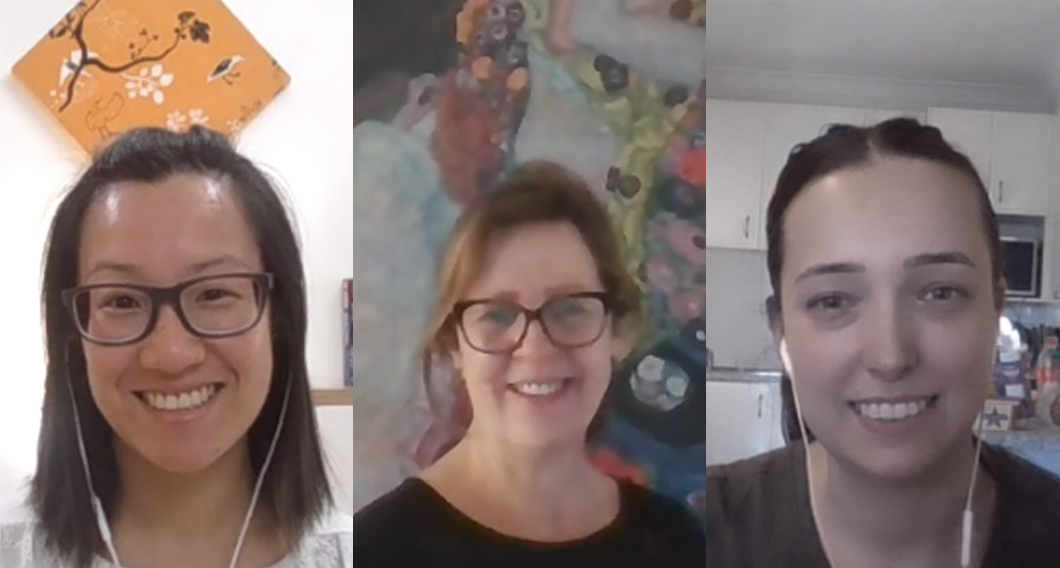The Health and Wellbeing Team from University of Technology Sydney

Anna Dawson, Yvonne Khoudair and Katherine Barbagallo
Job title
UTS Health and Wellbeing Team
Organisation
University of Technology Sydney
What are you/your organisation currently focusing on in terms of workplace health and wellbeing?
Recently we developed the UTS Mental Health and Wellbeing Strategy which covers the three key pillars to a mentally healthy workplace:
- building a psychologically safe culture;
- promoting positive practices that supports good mental health;
- supporting the health recovery and rehabilitation of staff.
Our focus in 2020 is on psychological health and safety and we conducted our first psychosocial risk assessment survey to understand our risks so we can tailor our interventions to address these risks and support good mental health in the workplace.
We also continue to support our staff through working remotely as a result of COVID19. Our focus in 2021 is to create programs and initiatives to support a mentally healthy hybrid working model.
What aspect of workplace health and wellbeing does your organisation do well in?
We currently have a holistic health and wellbeing program which focusses on the 5 ways to wellbeing – career and development, community connection, physical and psychological wellbeing as well as building positive relationships at home and at work.
We engage our wellbeing champions across the university to support our initiatives and various health promotions.
Our most popular program is the quarterly workshop for supervisors on Managing for Team Wellbeing which is in partnership with the Black Dog Institute.
What’s your biggest challenge working in workplace health and wellbeing?
The biggest challenge is having multiple support roles to staff in supporting their health and wellbeing. We support managers, staff, the university in shaping evidence-based frameworks as well as our HR colleagues in providing best practice health advice.
How does WayAhead Workplaces add value to your organisation’s health and wellbeing program?
WayAhead Workplaces has been a great source of information for us – from connecting with like-minded professionals to share ideas to building a community of practice and partnerships with providers.
How do you deal with stress?
Anna – I am believer in self-coaching (that probably comes from my training as a psychologist). When I am stressed, I stop and reflect on what is making me stressed and use my self-coaching strategies to work through it.
Katherine – Understand when I am stressed and taking the time to get outdoors, in nature and some sun.
Yvonne – The outdoors. Relax through meditation. A personal ability to place certain stressful issues/aspects outside of myself through mental decision making.
What are the key issues and considerations for people in workplace health and wellbeing roles?
Self-care is very important for anyone working in the health and wellbeing industry.
Also being able to manage changing work environments and help staff and their managers work through any communication issues between them.
How do you switch off from work?
Anna – I switch off by keeping work at work and try not to blur the boundaries between my personal life and work life. Prior to COVID19, I was cycling to and from work which was a great way to zone out and it is a cue for me to transition to my next phase of the day. Since working remotely at home, I switch off by packing my laptop away at the end of the day and storing it in the cupboard so it is out of sight.
Katherine – I have an end of day routine. I do not have any work emails on my personal phone.
Yvonne – To be very engaged with family & friends. Exercise. Cooking. Music. Reading.
What is your best time-saving tip?
Anna – I love my podcasts and audiobook. I usually listen to my books when I go for walks.
Katherine – Planning out your day, blocking time to focus on tasks and scheduling times for breaks to move.
Yvonne – Being well organised. Having things written down and maximising personal breaks to keep clarity and efficiency.
What do you think the future of work health and wellness programs look like?
We are likely to see a big focus on psychological heath and safety. We are already seeing a lot of development in this area, with the draft code of practice and the international ISO guideline. It is a very exciting time to finally see the importance of psychological health and safety being acknowledged.
Workplaces can play an important role to empower their staff to focus on their own wellbeing plan and encourage them to seek out activities that support their own needs.
We think there will be a shift from health promotion to creating a healthy work environment while increasing staff capability to create a healthy work environment.